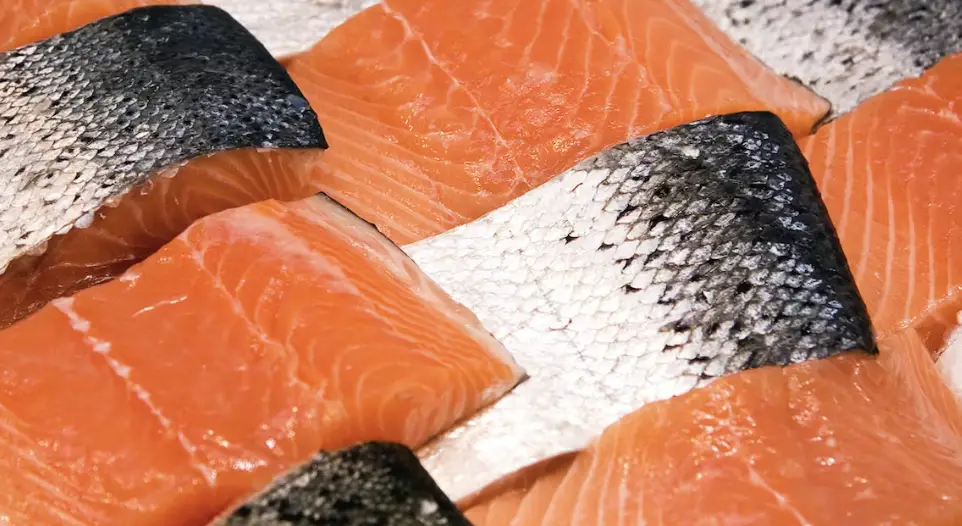
Sockeye Salmon vs. Atlantic Salmon: A Tale of Two Delicious Fish
Salmon, a prized fish known for its rich flavor and health benefits, is a favorite among seafood enthusiasts worldwide. Among the various species of salmon, two of the most popular and widely consumed are Sockeye Salmon and Atlantic Salmon. While both offer delectable taste and nutritional value, they possess distinct characteristics that set them apart. In this blog post, we’ll dive into the unique features of Sockeye Salmon and Atlantic Salmon, exploring their flavor profiles, habitat, and culinary versatility.
Sockeye Salmon:
1. Flavor Profile: Sockeye Salmon, also known as Red Salmon, boasts a deep, rich flavor with a pronounced earthy and robust taste. Its flesh is bright red in color, owing to its diet rich in krill and other plankton.
2. Nutritional Value: Sockeye Salmon is a nutrient powerhouse, high in heart-healthy omega-3 fatty acids, protein, and essential vitamins like vitamin D and vitamin B12.
3. Habitat: Sockeye Salmon are primarily found in the Pacific Ocean, ranging from the northern Pacific Rim to the western coast of North America. They are famous for their remarkable annual migration from the ocean to their natal freshwater rivers and streams for spawning.
4. Culinary Versatility: Due to its firm texture and bold flavor, Sockeye Salmon is excellent for grilling, roasting, or broiling. It holds its shape well and pairs beautifully with a range of marinades and sauces.
Atlantic Salmon:
1. Flavor Profile: Atlantic Salmon, often referred to as Salmon, boasts a milder and more delicate flavor compared to Sockeye Salmon. Its flesh is typically pink-orange, influenced by its diet of small fish, shrimp, and krill.
2. Nutritional Value: Like Sockeye Salmon, Atlantic Salmon is rich in omega-3 fatty acids, protein, and essential nutrients, making it a heart-healthy choice.
3. Habitat: Historically, Atlantic Salmon were abundant in the rivers and streams of the North Atlantic Ocean, including regions around North America and Europe. However, overfishing and habitat degradation have led to a decline in wild populations. Today, most Atlantic Salmon available commercially is farmed.
4. Culinary Versatility: Due to its delicate flavor, Atlantic Salmon is well-suited for a variety of preparations, including poaching, pan-searing, and baking. It pairs wonderfully with light citrus-based sauces and herb-infused marinades.
Health and Environmental Considerations:
When choosing between Sockeye Salmon and Atlantic Salmon, health and environmental factors may also influence your decision:
1. Wild vs. Farmed: Sockeye Salmon is primarily wild-caught, and its populations are managed to ensure sustainable fishing practices. On the other hand, most Atlantic Salmon available in markets is farmed, and the sustainability of certain farms can vary. Look for reputable sources that follow responsible aquaculture practices.
2. Mercury Levels: Both types of salmon are low in mercury, making them safe for regular consumption. However, pregnant women and young children should still moderate their intake, as with any fish.
3. Omega-3 Fatty Acids: Both Sockeye Salmon and Atlantic Salmon are excellent sources of omega-3 fatty acids, which offer numerous health benefits, including improved heart health and brain function.
Conclusion:
Whether you prefer the bold and robust flavor of Sockeye Salmon or the milder taste of Atlantic Salmon, both species offer exceptional taste and nutritional value. When choosing your salmon, consider factors such as sustainability, source, and culinary preferences. Whichever you select, you’re in for a treat with a delectable and healthy seafood option that can elevate any meal. So, go ahead and savor the best of the ocean with a mouthwatering serving of Sockeye Salmon or Atlantic Salmon – a true feast for the senses!






